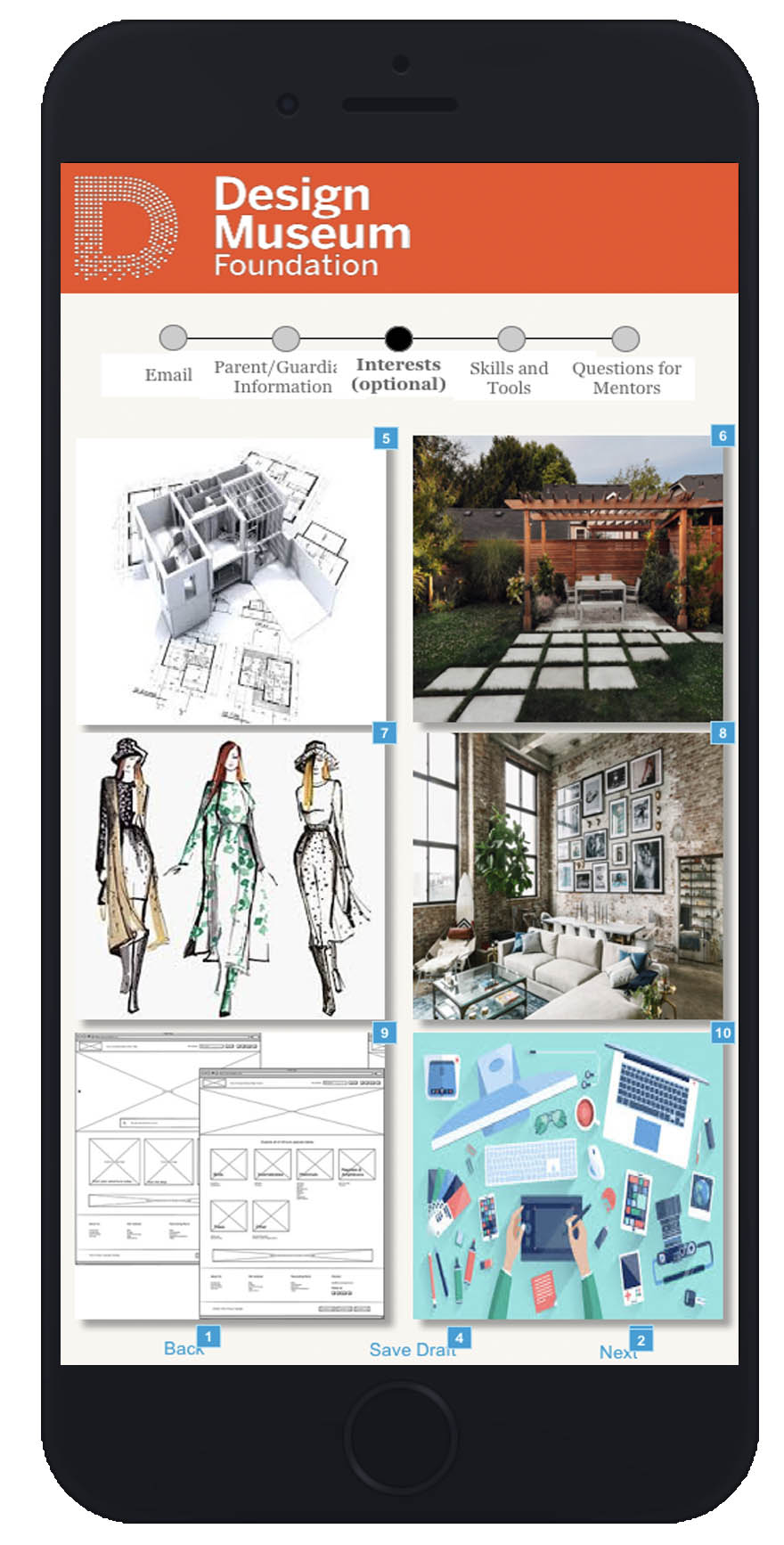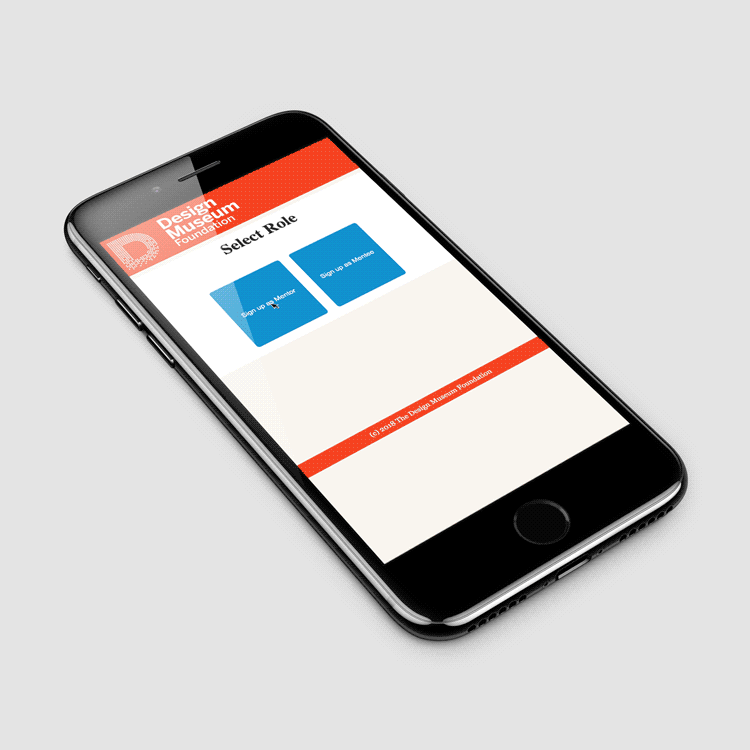Design Museum Foundation Mentorship Program
Connecting high school students interested in design with working professionals in order to increase diversity in design.
Project Brief
The Design Museum Foundation is interested in launching a mentorship program focused on helping students in underserved communities connect with design professionals that are underrepresented in design. The first phase of this project consisted of a large amount of exploratory research in order to determine the best options for implementing this program.
My Role
I worked in a team with three other designers over the course of three weeks. I contributed to all phases of design including: comparative analysis, ideation, sketching, all data visualization, and all presentation materials including user flows and journeys. I also conducted user research in the form of surveys, user interviews, and usability testing.
Comparative Analysis
We began by exploring several websites and mobile applications and found that two of these were similar to the mentorship platform we wanted to create: MentorOla and Shapr. Both platforms offered us insights into the language and taxonomy that we would want to include in our final prototype, including mentor profile tags for career, skill, and interest to help mentees pair with appropriate mentors. These platforms also illuminated the importance of letting mentees browse multiple mentor profiles before selecting one. Some platforms offered only limited access unless students were enrolled in college or paid for premium features.
Mentor Survey
A survey was widely disseminated across multiple channels for a period of five days targeting design professionals from various disciplines. Some example questions included:
How willing are you to participate in a mentorship program?
In which format(s) would you be open to providing mentorship?
How often would you be willing to meet with a mentee?
We found that a majority of the respondents were willing to participate in a mentorship program, but that time/availability were considered a barrier to participation. Respondents also seemed to be open to multiple methods of communication and connection. A survey for high school students interested in design was also drafted, but was not distributed during this phase of research due to logistical issues surrounding research involving minors.
Interviews
We were then able to conduct 15 interviews, 12 of which were with design professionals, and 3 of which were with high school students interested in art and design.
Interviews with design professionals were focused on the their professional development, and also questioned the role that mentorship played in their journeys. These interviews also focused on how willing the participants were to mentor young people interested in design, what the potential barriers to mentorship might be, and what factors would make mentorship more acheivable for them.
Interviews with high school students focused on the development of their interests in design and art, and on people and programs that had supported them. Students were asked about their interest in a mentorship program, and the best platforms for communication with them.
Student interview - Photo credit: Yi David Yang
Synthesis and
Feature Prioritization
Insights from the interviews and surveys were then used for affinity mapping of both mentors and mentees.
Mentor Groups:
I would give "x" amount of time to mentorship.
I think mentorship is mutually beneficial.
I found mentors in various ways.
I am willing to have mentees visit my workplace.
Mentee Group:
I value practical knowledge and experiences.
I have people that support me.
I have questions for designers.
I seek opportunites and connections.
These groups lead directly to feature prioritization for a responsive website designed for mobile.
Literature Review
As a part of our exploratory research, we reviewed four studies on youth mentorship programs, to get a sense of what had worked and what hadn’t worked in other programs.
Our main takeaways from our literature were that:
Mentorship was described as way to develop skills, positive behaviors and attitudes
Mentor relationships benefit from similar background
Length of mentorship is related to its impact on the mentee
Program abandonment, perceived lack of motivation, inadequate program support, and cultural differences between mentee and mentor all contribute to termination mentorships
User Flows and
Stakeholder Roles
As a team we looked at the mentorship process as a whole from three points of view:
Mentors
Mentees
Design museum
We then visualized three users flows for the overall process using the data gathered from all previous research. I created the following diagram after we had white-boarded these flows as a team.
User flow visualization
I then sketched and visualized the following mentor and mentee journeys to illustrate the steps that each group would need to make in the mentorship process.
Prototype
We then developed a responsive website that would facilitate professionals meeting students to develop mentor/mentee relationships.
Site Map
Mentor registration
Mentee registration
Next Steps
This will continue to be an ongoing project over the course of the next year. As a team we will continue to focus on research. Moving forward we will focus on student interviews, surveys, and testing. We will also concentrate on further defining all stakeholder roles. Initially the founders of the Design Museum Foundation believed that they would have a limited role in the mentorship process, but through our initial research, we concluded that the organization would have to be heavily engaged with the program in order for it to be successful. Subsequently we would also like to identify and cultivate the necessary partnerships with schools, organizations, and individuals that will contribute to the success of the mentorship program. Lastly, we will continue to test and refine our initial prototype.




